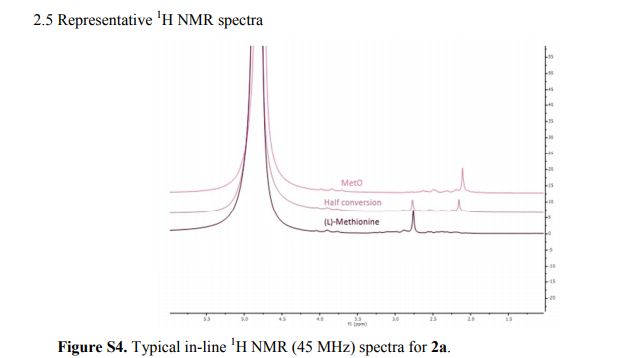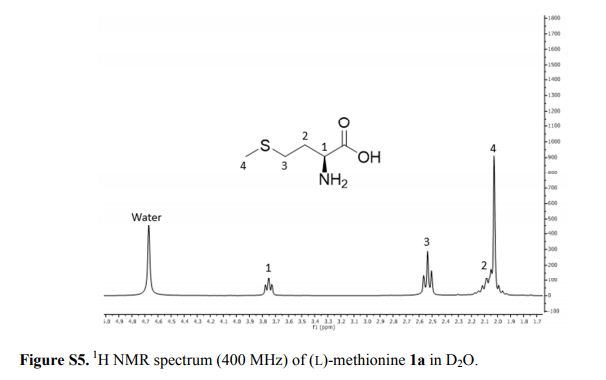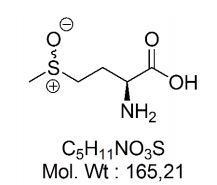


v
Methionine sulfoxide (2a). 1H NMR (D2O, 400 MHz): δ = 3.79 (m, 1H), 2.81-3.08 (m, 2H), 2.66 (s, 3H), 2.23 (m, 2H) ppm. The NMR data matched the data obtained for commercial methionine sulfoxide. ESI HRMS m/z C5H12O3NS [M+H]+ : calcd 166.05324. Found: 166.05330
Scalable Photocatalytic Oxidation of Methionine under Continuous-Flow Conditions
†Center for Integrated Technology and Organic Synthesis, Department of Chemistry, ‡Nanomaterials, Catalysis & Electrochemistry - NCE, Department of Chemical Engineering, ∥Biophotonics, Department of Physics, University of Liège, B-4000 Liège (Sart Tilman), Belgium
§ Corning Reactor Technologies, Corning SAS, 7 bis Avenue de Valvins, CS 70156 Samois sur Seine, 77215 Avon Cedex, France
Org. Process Res. Dev., Article ASAP
DOI: 10.1021/acs.oprd.7b00212
*E-mail: jc.monbaliu@ulg.ac.be., *E-mail: Laurent.Dreesen@ulg.ac.be., *E-mail: b.heinrichs@ulg.ac.be.
Highly efficient and chemoselective singlet oxygen oxidation of unprotected methionine was performed in water using a continuous mesofluidic reactor. Sustainable process engineering and conditions were combined to maximize process efficiency and atom economy, with virtually no waste generation and safe operating conditions. Three water-soluble metal-free photosensitizers [Rose Bengal, Methylene Blue, and tetrakis(4-carboxyphenyl)porphyrin] were assessed. The best results were obtained with Rose Bengal (0.1 mol %) at room temperature under white light irradiation and a slight excess of oxygen. Process and reaction parameters were monitored in real-time with in-line NMR. Other classical organic substrates (α-terpinene and citronellol) were oxidized under similar conditions with excellent performances.

/////////////


No comments:
Post a Comment